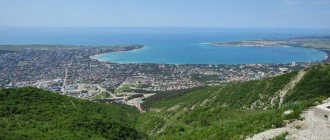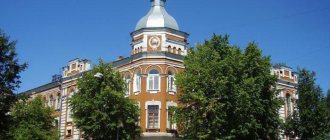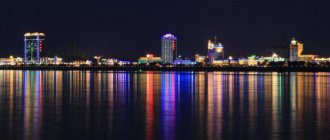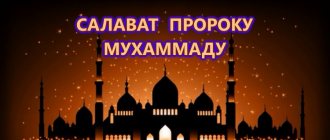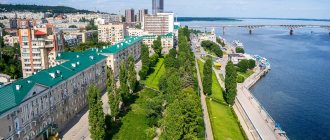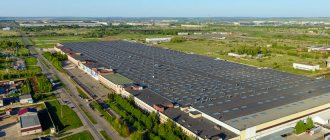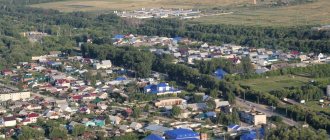City `s history
The history of the settlement takes its origins in the Nytva delta, and begins in the distant Middle Ages. The first written mentions and descriptions of the settlement date back to 1623, in the scribe book (Land inventory carried out in Rus' to describe the property status of service people) of the Russian state.
The village lived a calm and quiet life, and no one was interested in it, until the Nytvensky copper smelter began its work in 1758, which determined the future of the entire settlement. In 1770, there were about 170 households in Nytva.
In 1788, the plant changed its activity profile - now it became an iron-making plant, due to the depletion of cuprous sandstones, which were a source of copper. Before the outbreak of the First World War, the plant was engaged in the production of various rolled metal products.
The transition to a military footing after the outbreak of the First World War did not bypass Nytva either - now the local plant produced military products.
The next stage of development is driven by the development of technology and widespread industrialization. The plant began to produce products from non-ferrous metals and stainless steel.
During the reign of the Communist Party, Nytva first became a workers' village (1928), and after some time it was given the status of a city (1942).
Economy
The largest enterprise in the city is the Nytvensky Metallurgical Plant. The main products of rolling production are tombak-steel-tompak bimetal, produced in strips and rolls with a thickness of 0.5 to 3.2 mm, nickel-steel-nickel bimetal with a thickness of 0.4-1.5 mm, aluminum-steel-aluminum bimetal with a thickness of 0.5-1.8 mm, tri-metal tombac-steel-nickel 0.4-1.5 mm thick. Bimetal is a complete substitute for non-ferrous metals and alloys. Cold-rolled steel strips from low-carbon, carbon and stainless steel grades, hot-rolled sheets from low-carbon steel grades (thickness of strips and sheets from 0.5 to 6.3 mm) are produced in large volumes. The powder metallurgy shop produces more than 100 types of parts, including parts for Podolsk sewing machines. The annual production capacity of the workshop is 2000 tons of powder products. In 1988, the plant began serial production of tank containers with a capacity of 16.5 cubic meters. m. for storage and transportation of liquid food products, juices, concentrates, puree products. In 1956, construction began in Nytva, which united the Gvozdar artel, named after. Krupskaya and industrial plant. The plant specializes in metalworking, producing metal structures, containers, tiles, a tourist hatchet, etc. Other enterprises in Nytva are a bakery, a food processing plant, a creamery, and a utility plant.
People associated with Nytva
The pride of every region and land is the people who live on it and glorify it. Nytva is no exception, and many people who came from it have become eminent personalities.
- Alexander Vasilyevich Oborin is a hero of the Soviet Union, holder of two Orders of Lenin, three Orders of the Red Banner, and the Order of the Red Star. Military man, commander of the 438th Fighter Aviation Regiment. The title of Hero of the USSR was awarded posthumously after he rammed an enemy fighter in a battle over the Sandomierz bridgehead in August 1944.
- Vladimir Gennadievich Chagin is a racing driver, seven-time winner of the Dakkar Rally in trucks, and leader of the KAMAZ-master team. Honored Master of Sports of the Russian Federation.
- Alexey Dmitrievich Shirinkin - fighter pilot, participant in the First World War and the Civil War. Recipient of two Orders of the Red Banner.
- Valery Vladimirovich Trapeznikov is a deputy of the State Duma of the Russian Federation of the 6th convocation. In 2013, he received the medal of the Order of Merit for the Fatherland, 2nd class.
Nytvensky Metallurgical Plant
Nytvensky Metallurgical) was built in 1756 by order of the State Bergkollegium.
First, copper was smelted here, then cast iron, iron was made, agricultural machinery and sheet metal were produced. Until the 30s of the 20th century, the profile of the enterprise changed several times. Since 1932, the production of bimetallic rolled products began, and since 1939 - consumer goods. During the Great Patriotic War, the plant significantly increased bimetal production and began producing caps and other products for the needs of the front. By 1944, production volume increased almost 5 times. The heroic work of Nytva metallurgists was awarded the Order of the Great Patriotic War, 1st degree. After 1945, the plant quickly transferred production to peaceful lines. Since the 60s, the plant began a phased reconstruction of the main production, which was completed in the 80s, when the production of rolled products and products from metal powders was put into operation. After the reforms of the early 90s, the volume of output at the plant sharply decreased, as did the number of employees. However, in a short time the crisis was overcome. Since 1994, the production of blanks for Goznak products from bimetals and alloys has been established, since 2000 the production of rondoles has been mastered, and the production of stretch film has been organized. In those same years, the plant successfully mastered the production of galvanized tape, which is practically not subject to corrosion.
How to get to the city of Nytva
The best option is to get there from Perm. The distance between the cities is small - only about 67 kilometers. There are many ways to get to Perm from different parts of Russia - there is an airport and a railway station.
Buses run between the cities, and this is the easiest way for a tourist to get to Nytva. On the way, you can drop into the village of Uralsky in the Perm Territory - a small picturesque settlement on the banks of the Kama River, there is a bus station here.
The bus station in Perm is located at 68 Revolyutsii Street. More than twenty flights depart to Nytva during the day. Taking into account stops, the average bus travel time will be one and a half to two hours. In Nytva, the bus station is located at Metallurgov Street, building 1.
Education and culture
- Universities
- School
In the city of Nytva
There are 7 general education institutions: MBOU basic secondary school No. 1 in Nytva (617000 Perm region, Nytva, Chapaeva St., 22), MBOU basic secondary school No. 2 in Nytva (617000 Perm region, Nytva, st. K. Liebknecht, 1), MBOU basic secondary school No. 3 in Nytva (617000 Perm region, Nytva, Lenin Ave., 24), MAOU Gymnasium in Nytva (617000 Perm region, Nytva, Komsomolskaya str., 26), MBOU secondary school in Nytva (617000 Perm Territory, Nytva, Lenin Ave., 24), MBOU open (shift) secondary school in Nytva (617000 Perm Territory, Nytva, K. Marks St. , 47), MBS(K)OU for students, pupils with disabilities, special (correctional) secondary school in Nytva (617000 Perm region, Nytva, K. Marx St., 45).
Useful tips for tourists
Things should be taken depending on what kind of vacation you are planning - an active or relaxing vacation. In principle, the most interesting thing in Nytva will be something in between these species. It is interesting to walk through picturesque places and admire the fascinating landscapes of Russian nature.
It must be remembered that the surroundings of Nytva are very swampy. Therefore, for festivities it is always worth taking high-quality and waterproof shoes.
And if you are planning a driving tour, you should choose cars with high cross-country ability. Also, given the local climate, you need to take clothes that will be inaccessible to mosquitoes and ticks.
All the features of the tourist set here are due to the marshy area. Hence the problems with blood-sucking insects and wet soil underfoot. And in general, the climate is somewhat humid, so this factor should also be taken into account.
It is very important to take a map with you - in conditions of remoteness from civilization, gadgets can fail.
Map
| Nytva: maps |
Nytva: photo from space (Google Maps) Nytva: photo from space (Microsoft Virtual Earth)
| Nytva. Nearest cities. Distances in km. on the map (in brackets along roads) + direction. Using the hyperlink in the distance , you can get the route (information courtesy of the AutoTransInfo website) | |||
| 1 | Ural | 13 (13) | IN |
| 2 | May | 23 (48) | NE |
| 3 | Okhansk | 24 (47) | YU |
| 4 | Krasnokamsk | 29 (38) | NE |
| 5 | Yugo-Kama | 29 (62) | SE |
| 6 | Overyats | 35 () | NE |
| 7 | Kultaevo | 36 () | IN |
| 8 | Wow | 36 (44) | Z |
| 9 | Vereshchagino | 42 (67) | Z |
| 10 | Karagay | 44 (44) | NW |
| 11 | Kondratovo | 45 () | IN |
| 12 | Gamovo | 45 () | IN |
| 13 | Bolshaya Sosnova | 52 (67) | SW |
| 14 | Permian | 54 (73) | IN |
| 15 | Star | 62 (113) | IN |
| 16 | Wasp | 72 (146) | YU |
| 17 | Ilyinsky | 73 (157) | WITH |
| 18 | Frequent | 74 (131) | YU |
| 19 | Siwa | 74 (95) | NW |
| 20 | Polazna | 75 (108) | NE |
| 21 | Kukushtan | 75 (125) | SE |
| 22 | Sylva | 84 (105) | IN |
| 23 | Dobryanka | 86 (134) | NE |
| 24 | Kez (Udmurt Republic) | 95 (152) | Z |
| 25 | Debyosy (Udmurt Republic) | 96 (123) | Z |
| 26 | Yelovo | 101 (197) | YU |
| 27 | Chermoz | 105 (163) | NE |
| 28 | Kungur | 110 (166) | SE |
| 29 | Barda | 112 (159) | YU |
| 30 | Sharkan (Udmurt Republic) | 112 (181) | SW |
a brief description of
The city is located on the western slope of the Middle Urals, on the river. Nytva, near its confluence with the Kama (pier), 70 km west of Perm. Within the city, on the Nytva River, there is the Nytvensky pond (the largest in the Perm region, area 800 hectares). Railway station.
Territory (sq. km): 143
Information about the city of Nytva on the Russian Wikipedia site
Historical sketch
It was first mentioned in 1623 as the village of Nytva.
In 1756, the Stroganovs built a copper smelter (later an ironworks, producing anchors and hammers for the Nytvinsk shipyard, agricultural implements, etc.); the village near him was named for its location on the river. Nytva (right tributary of the Kama).
Hydronym from Komi-Zyryan nyd “damp, swampy place, swamp near the shore” and va “river”; The name is associated with the swampiness of the river floodplain.
Workers' settlement since August 27, 1928. City since 1942.
Economy
Metallurgical JSC "Nytva" (bimetal, thin sheet steel, steel strip, etc.), (metal products). Food industry enterprises (oil processing plant, food processing plant, etc.). Production of reinforced concrete structures.
In the Nytvensky district, in the urban-type settlement of the Ural - Perm plywood mill.
They grow rye, wheat, oats, barley, fodder crops, potatoes, and vegetables. Dairy and beef cattle breeding.
Main enterprises
NON-FERROUS METALLURGY
JSC "Nytva"
617050, Perm region, Nytva, st.
K. Marx, 71 Offers:
bimetal, powder metallurgy products, kitchen sets, stainless steel utensils
WOOD PROCESSING INDUSTRY
CJSC "Perm Plywood Mill"
617055, Perm region, Nytva, Uralsky town,
Offers:
plywood, laminated plywood, chipboard
Museums, galleries, exhibition halls
Local Lore Museum of the village.
Uralsky 617055, Perm region, Nytva, Uralsky village, st. Transportnaya, 7 Nytva Museum of History and Local Lore 617000, Perm Territory, Nytva, st. Karla Marksa, 68 Phone(s): (34272) 3-0946
| Population by year (thousands of inhabitants) | |||||||
| 1931 | 4.7 | 1996 | 22.9 | 2008 | 20.5 | 2017 | 18.8 |
| 1939 | 8.8 | 1998 | 23.1 | 2010 | 20.6 | 2018 | 18.6 |
| 1959 | 19.2 | 2000 | 22.9 | 2011 | 19.0 | 2019 | 18.4 |
| 1967 | 19 | 2001 | 22.8 | 2012 | 19.0 | 2020 | 18.1 |
| 1970 | 17.5 | 2003 | 20.7 | 2013 | 18.9 | 2021 | 18.0 |
| 1979 | 16.9 | 2005 | 20.7 | 2014 | 18.8 | ||
| 1989 | 21.9 | 2006 | 20.6 | 2015 | 18.9 | ||
| 1992 | 23.1 | 2007 | 20.4 | 2016 | 18.9 | ||
Interesting Facts
- The spoon museum in Nytva is unique, and there are no other similar exhibitions in the world.
- Nytva received its name in connection with the color of the local pond - green.
- Nytvensky pond blooms in mid-July and the water becomes really green
- The copper smelter was founded by Maria Artemyevna Stroganova
- The products of the Nytvensky plant - cutlery, according to some data, are now used in every seventh Russian family.
- Nytvensky Creamery is the largest dairy processing plant in the Perm region
- The Nytva population, like most of the Urals, supported Lenin’s ideas, and already at the end and beginning of 1917-18, Soviet power was established in Nytva
- The Oasis sanatorium-preventorium is located in Nytva. By the way, he provides a tour of the monuments and attractions of the city. Located right on the shore of Nytvensky pond.
City postal code – 617000
Local Attractions
— The pond in Nytva is a monument of nature and history of the 18th century. — Architectural and historical center of the factory village (XIX century) — Temple of the Hodegetria Mother of God in the village. Sherya - mid-18th century. (12 km from Nytva along the highway) - The Nytva Local History Museum was founded in 1958. The museum's funds contain materials on the history of the city and region, mainly from the 19th-20th centuries. In 1986, an exhibition on the history of the city in the twentieth century was erected. A re-exposition has been held since 1998. A concept for the development of the museum in general and exhibition activities in particular is being developed. In 1999-2000 an exhibition was created on the history of Nytva in the 19th and early 20th centuries. Part of the new exhibition was the diorama “Nytva Fair” (there are 5 dioramas in the region in total).
Reviews
Maria, 23, Ekaterinburg
I have been involved in tourism since I was 17 years old. I traveled up and down the entire Sverdlovsk region and became interested in new directions. The choice fell on the Kama River. Perm region, the city of Nytva is an interesting tourist destination. The local nature is not very different from our region, but the proximity of the Kama is a delight. The landscapes opening from Mount Glyadenovka are simply a sight for sore eyes! The Ural region, in principle, is very rich in natural beauty, but the Perm region, I believe, surpasses it in some aspects.
Social sphere and culture
In terms of housing provision and the degree of its improvement, Nytva lags somewhat behind the regional average level. The same situation is observed with the development of other sectors of social infrastructure. In 1988, the Nytvensky Metallurgical College was organized on the basis of a branch of the Perm Mechanical College. It trains mid-level specialists in the following specialties: rolling technician, electrical technician, powder metallurgy technician. The graduation rate of specialists is up to 150 people. in year. At the metallurgical plant there is a vocational school that trains personnel in specialties; electrician for equipment repair and maintenance, general machine operator, laboratory chemist, pastry chef, tool maker, carpenter, repairman. The annual graduation rate is up to 100 people. A music school, 4 cultural centers, 4 libraries, and a local history museum have been opened in the city. The decoration of the city is a pond (800 hectares) on the Nytva River. In the development of the city, old and new microdistricts are distinguished. The panorama of the city is enlivened by the hilly terrain.


